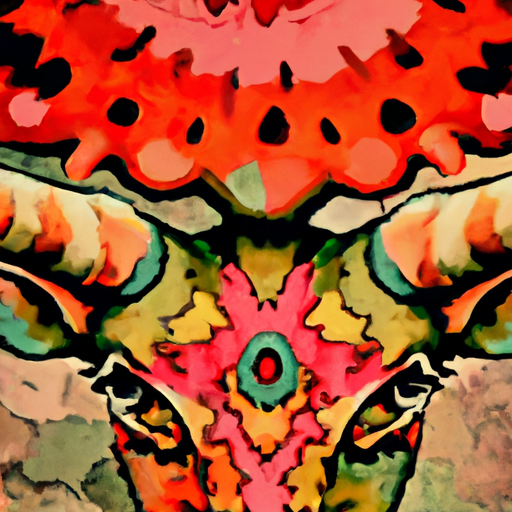
-
Table of Contents
- Folklore Fantasies: Mythical Design Elements
- The Power of Myth
- Mythical Design Elements in Graphic Design
- Mythical Design Elements in Interior Design
- Case Studies: Mythical Design Elements in Action
- Case Study 1: The Starbucks Logo
- Case Study 2: The Harry Potter Book Covers
- The Impact of Mythical Design Elements
- Conclusion
Folklore Fantasies: Mythical Design Elements

Folklore and mythology have long been sources of inspiration for artists and designers. The rich tapestry of stories, creatures, and symbols found in folklore provides a wealth of material to draw upon when creating visually captivating designs. In this article, we will explore the use of mythical design elements in various art forms, from graphic design to interior design, and examine how these elements can add depth and intrigue to any creative project.
The Power of Myth
Mythology has been an integral part of human culture for centuries. These ancient stories were often used to explain natural phenomena, teach moral lessons, or provide a sense of identity and belonging. Today, mythology continues to captivate our imaginations and serves as a source of inspiration for many artists and designers.
By incorporating mythical design elements into their work, artists can tap into the power of these ancient stories and create a sense of wonder and enchantment. Whether it’s a logo, a book cover, or a piece of jewelry, the use of mythical symbols and motifs can instantly transport the viewer into a world of magic and fantasy.
Mythical Design Elements in Graphic Design
Graphic design is a field that lends itself particularly well to the incorporation of mythical design elements. From logos to posters, graphic designers have the opportunity to create visually striking designs that tell a story and evoke a sense of mystery and intrigue.
One example of a mythical design element commonly used in graphic design is the dragon. Dragons have been a staple of mythology in many cultures, representing power, wisdom, and protection. Incorporating a dragon into a logo or a poster can instantly give the design a sense of strength and mystique.
Another popular mythical design element is the phoenix. The phoenix is a mythical bird that is said to rise from the ashes, symbolizing rebirth and renewal. In graphic design, the phoenix can be used to convey a sense of transformation or to represent a brand that has overcome adversity.
Mythical Design Elements in Interior Design
Interior design is another area where mythical design elements can be effectively incorporated. From furniture to wallpaper, these elements can add a touch of whimsy and fantasy to any space.
One example of a mythical design element commonly used in interior design is the unicorn. Unicorns have long been associated with magic and purity, and incorporating unicorn motifs into a room can create a sense of enchantment and wonder. Whether it’s a unicorn-shaped lamp or a unicorn-patterned wallpaper, these design elements can instantly transform a space into a fairy tale realm.
Another popular mythical design element in interior design is the mermaid. Mermaids are mythical creatures that are half-human and half-fish, often associated with the sea and the mysteries that lie beneath its surface. Incorporating mermaid motifs into a bathroom or a beach house can create a sense of serenity and tranquility.
Case Studies: Mythical Design Elements in Action
Let’s take a look at some real-life examples of how mythical design elements have been successfully incorporated into various art forms.
Case Study 1: The Starbucks Logo
The Starbucks logo is a prime example of how a mythical design element can become synonymous with a brand. The logo features a twin-tailed mermaid, known as a siren in Greek mythology. The siren represents seduction and allure, qualities that Starbucks aims to convey through its products and ambiance. The use of the siren in the logo instantly creates a sense of intrigue and sophistication.
Case Study 2: The Harry Potter Book Covers
The Harry Potter book covers are another example of how mythical design elements can enhance the visual appeal of a product. The covers feature various mythical creatures and symbols, such as owls, dragons, and wands. These elements not only capture the essence of the magical world created by J.K. Rowling but also entice readers with the promise of adventure and wonder.
The Impact of Mythical Design Elements
The use of mythical design elements can have a profound impact on the viewer or user of a design. These elements tap into our collective unconscious and evoke emotions and associations that are deeply ingrained in our cultural heritage.
By incorporating mythical design elements, artists and designers can:
- Create a sense of wonder and enchantment
- Evoke emotions and associations tied to ancient stories and symbols
- Add depth and intrigue to their work
- Create a unique and memorable brand identity
Whether it’s a logo, a book cover, or an interior design, the use of mythical design elements can elevate a creative project and make it truly stand out.
Conclusion
Folklore fantasies and mythical design elements have the power to transport us to a world of magic and wonder. By incorporating these elements into their work, artists and designers can create visually captivating designs that evoke emotions and associations tied to ancient stories and symbols.
Whether it’s a graphic design or an interior design, the use of mythical design elements can add depth and intrigue to any creative project. From dragons to unicorns, these elements have the ability to create a sense of enchantment and wonder, making the viewer or user feel like they are part of a timeless tale.
So, the next time you embark on a creative project, consider incorporating some mythical design elements. Let the power of myth guide your imagination and create a truly captivating and memorable experience for your audience.
